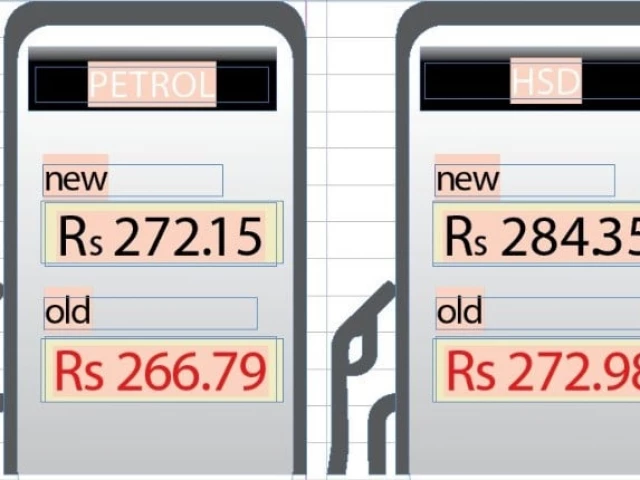Islamabad:
The Government on Tuesday uploaded the prices of oil products until up to RS11 per liter for the second half of July 2025 in a regressive step that would exacerbate the economic difficulties faced by the common man.
This is the second consecutive increase in gasoline and diesel prices since the beginning of the new fiscal year on July 1. On June 30, the Government had increased fuel prices until RS10 during the first half of the current month that ended on Tuesday.
Separately, the oil and gas regulatory authority (OGRA) announced a reduction in the prices of liquefied natural gas (RLNG) re-gasified for the current month, while the chest oil rate and light diesel oil also fell slightly.
According to a notification issued by the Finance Division, the price of gasoline increased by RS5.36, from RS266.79 to RS272.15 per liter, while high -speed diesel (HSD) increased by RS11.37 per liter, from RS272.98 to RS284.35 during the period from July 16 to 31.
This last adjustment in gasoline and HSD prices reflects persistent volatility in world oil markets. It also shows the government’s fiscal limitations when fulfilling its ambitious income objectives, since it is already charging the highest rate of oil tax (PL) in oil products to raise income.
The Government said he had made the last decision about OGRA recommendations and relevant ministries. “The Government has decided to review the prices of oil derived products for the fortnight as of July 16, depending on the recommendations of Ogra and the relevant ministries,” he said.
Ogra had recommended the increase in oil -derived products prices based on RS78.02 per liter PL on gasoline and RS77.01 in HSD. He had also assumed the margin of inner freight equalization (IFEM) to RS8.89 per liter in gasoline and RS6.04 in HSD. The exchange rate adjustment was calculated at RS3 per liter in gasoline and RS2 in HSD.
Diesel is widely used in agricultural and cargo transport, and any price increase directly affects the cost of goods and services. Meanwhile, gasoline feeds motorcycles and cars, and serves as an alternative to compressed natural gas (CNG), especially in Punjab, where CNG stations depend on imported LNG.
The new price increase is expected to extend the gap between stagnant domestic income and the growing cost of living. Analysts have warned that without the fiscal space or specific subsidies, the worst part of the volatility of global oil will continue to pass to end users.
The government had the space to rescue consumers from the current increase in oil prices by reducing the PL rate, but did not compromise income collection and, therefore, the total impact of the increase in oil prices on the global market towards consumers was transferred.
On July 1, the Federal Government has significantly increased gasoline and HSD prices, attributing the increase to global market volatility in the middle of the Iran-Israel war. Gasoline increased by RS8.36 to RS266.79 per liter, and HSD at RS10.39 to RS272.98, according to Obgra’s recommendation.
Pakistan imports oil derived products to meet around 85% of its local consumption, while 15% of the needs are met through crude oil produced locally. At present, consumers are already paying more than RS77 per liter in pl. The current year budget also includes a new carbon tax, which further drives fuel prices.
Meanwhile, in the deregulated market, chest oil becomes cheaper in RS3.10 and the price of the LDO decreased by RS1.85, while ORGRA, through a notification, announced a reduction in RLNG prices for the current month in the back of a slight decrease in the exhypted price (des) delivered (DES).
According to the OBRA notification, RLNG prices for the Sui Northern Gas Pipelines Limited (SNGPL) and the Sui Southern Gas Company (SSGC) had undergone changes in the transmission and distribution segments.
For the SNGPL, the new transmission price has been established at $ 10,8338 per million British thermal units (MMBTU), below $ 11,0154, reflecting a decrease of $ 0.1816, or 1.65%. The distribution price has been reviewed at $ 11,5787 per MMBTU of $ 11,7816, marking a decrease of $ 0.2029, or 1.72%.
Similarly, the transmission price of the SSGC has decreased from $ 9,7284 per MMBTU in June to $ 9,4713 in July, a 2.64%decrease. However, the distribution price has also dropped from $ 10,8650 per MMBTU to $ 10,5737, a reduction of $ 0.2913, or 2.68%.




